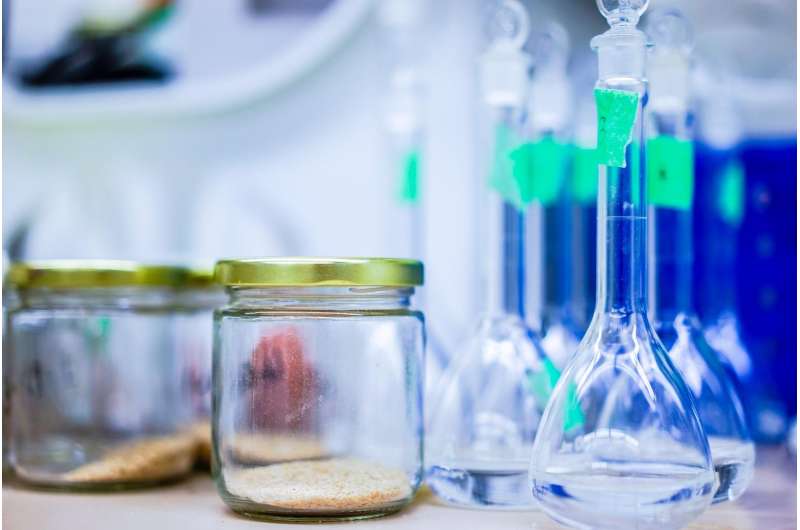Patient's cells used to replicate dire developmental condition

The blood-brain barrier is biology's proverbial double-edged sword.
An impermeable shield of endothelial cells that protects our brains from toxins and other threats that may lurk in circulating blood, the barrier can also exclude therapeutic drugs and, at times, essential biomolecules required for healthy brain development.
A case in point is the rare but severe psychomotor disease Allan-Herndon-Dudley syndrome (AHDS), a congenital condition that affects only males and starves the developing brain of thyroid hormone, resulting in cognitive impairment and atrophied muscles and motor skills. The condition is not only untreatable, but seems to be peculiar to humans, meaning scientists have been unable to study the disease and seek new treatments by modeling it in an animal like the mouse.
But now, a team of scientists from the University of Wisconsin-Madison and Cedars-Sinai in Los Angeles have used the cells of AHDS patients to recreate not only the disease, but a mimic of the patient's blood-brain barrier in the laboratory dish using induced pluripotent stem cell technology.
"This is the first demonstration of using a patient's cells to model a blood-brain barrier defect," explains Eric Shusta, a UW-Madison professor of chemical and biological engineering and a senior author of the new study published today (May 16, 2017) in the journal Cell Stem Cell. "If we had just the (compromised) neural cells available, we wouldn't have been able to identify this key characteristic of AHDS."
The new work not only establishes a laboratory model for Allan-Herndon-Dudley syndrome, but also hints at therapies that could prevent or reduce the debilitating effects of the disease, says Clive Svendsen, director of the Cedars-Sinai Board of Governors Regenerative Medicine Institute, a senior author of the new study and an expert on diseases of the central nervous system. The Wisconsin-Cedars-Sinai collaboration also included UW-Madison Professor of Chemical and Biological Engineering Sean Palecek and Abraham Al-Ahmad, now a professor of pharmaceutical sciences at Texas Tech University.
Allan-Herndon-Dudley syndrome is caused by defects to a single gene that controls the flow of thyroid hormone to the brain. It affects the developing male brain beginning before birth and results in moderate to severe cognitive disability, impaired speech, underdeveloped muscles and involuntary movement, among other symptoms. As patients age, the condition progresses and many become confined to wheelchairs.
The flawed gene, says Shusta, blunts the work of a biomolecule called MCT8, a transporter that shepherds thyroid hormone through the blood-brain barrier. In the earliest stages of development, several studies suggest a fetus obtains significant amounts of thyroid hormones from the mother.
"The blood-brain barrier forms pretty early in gestation, so the thyroid hormone, even from the mother, is probably not getting through the barrier and into the brain, likely leading to developmental deficits," says Shusta, whose group was among the first to develop blood-brain barriers from patient-derived stem cells in the lab dish.
The ability to recapitulate both the affected neural cells and the blood-brain barrier, according to Shusta and Svendsen, provides detailed insight that not only reveals the mechanics of the syndrome, but also raises the possibility of identifying drugs that may help overcome the diminished ability of the hormone to nurture the developing brain.
In addition, several other neurological diseases like Alzheimer's disease and Huntington's disease may involve dysfunction in the blood-brain barrier, explains Gad Vatine of Cedars-Sinai, the lead author of the report. "The significance of this study expands beyond the limits of AHDS research, to the possibility of stem cell modeling the blood-brain barrier component in many other neurological diseases," Vatine says.
As an example, Leslie Thompson and coworkers at the University of California, Irvine, have used the blood-brain barrier model developed in the Shusta laboratory to study abnormalities in the blood-brain barrier of Huntington's disease patients. That work is published in the May 16 edition of Cell Reports.
More information: Gad D. Vatine et al, Modeling Psychomotor Retardation using iPSCs from MCT8-Deficient Patients Indicates a Prominent Role for the Blood-Brain Barrier, Cell Stem Cell (2017). dx.doi.org/10.1016/j.stem.2017.04.002


















